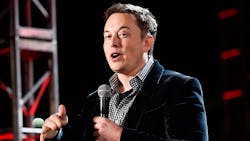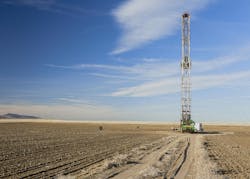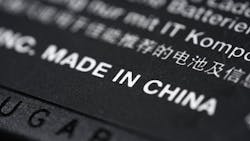Tesla Scores a Sweet Deal and Manufacturing Day Debuts: 25 in 2025
In the early 2010s, the economy was starting to recover and with it, the groundwork laid for a new era in industry, one that we’re familiar with today. Manufacturing was just beginning its digital transformation. Other firsts happened as well: Tesla began production at its first plant and Manufacturing Day, now a national phenomenon, made its debut.
In our third installment of Manufacturing Gamechangers: 25 and 2025 we’ll examine some of the fledgling concepts and shifts that today are well-known and widely accepted.
Special thanks to IndustryWeek contributors Jamie Flinchbaugh, Christopher Tang, Carolyn Hendrickson, Warren Browne and Lauren Pittelli and former IndustryWeek editors Pat Panchak and Travis Hessman, who all gave us valuable input on the list.
We’d like to hear from our readers as well. Do you have a gamechanger that’s not on the list—or have your own unique list in mind? Or, maybe you just want to relate a memory associated with one of our Gamechangers. Please share with us below.
We hope this series prompts more discussion and reflection about where manufacturing has been, where it is today and where it’s headed.
#11: Tesla Purchases the Former GM-Toyota Factory in Fremont, California
In 2010, Toyota President and CEO Akio Toyoda had heard the buzz about upstart electric-vehicle maker Tesla, which had started manufacturing its stylish Roadster vehicles one at a time in a garage behind its showroom in California, and decided to see things for himself. Toyoda flew from Japan with a team of Toyota engineers to Palo Alto to meet CEO Elon Musk and take one of the new models for a test drive. Toyoda, a “master driver” who had raced cars, put the Tesla through its paces on the surrounding mountain roads and gave it a big thumbs up. He also offered Musk the mothballed plant in Fremont, California for $42 million. GM abandoned the plant during its government-sponsored bankruptcy, and in 2009, Toyota decided not to operate the NUMMI plant without its former partner.
Considering the 5.5 million-square-foot turnkey plant was valued at $1.3 billion, it was a real boon for Musk, and instrumental in getting Tesla into the business of mass-producing EVs, while early competitors idled. NUMMI came equipped with a plastics molding factory, two paint shops, assembly lines and its own power plant.
Toyota also invested $50 million in Tesla and provided $15 million in additional factory equipment for the plant. That phenomenal boost from Toyota, combined with Musk’s business plan to produce luxury vehicles to raise enough money to make lower-cost mass market EVS, distinguished Tesla from the pack.—Laura Putre
More Manufacturing Gamechangers
#12: US Shale Gas Production Begins Its Rapid Rise
Remember the “shale gale”? That’s what some experts called the rapid rise of shale gas production starting in the early 2010s. Thanks in no small part to the shale revolution, the United States became a net exporter of natural gas in 2017 for the first time since the late 1950s, and a net energy exporter in 2019. Multiple factors contributed to increased shale gas exploration, including Hurricane Katrina in 2005, when natural gas prices spiked in response to significant disruptions to pipelines, offshore platforms and processing facilities.
But it was improved (and controversial) production technologies, known as hydraulic fracturing (or fracking) and horizontal drilling, that reduced the cost of extracting shale gas from impermeable shale and made it an economical energy source to mine. While plentiful and affordable natural gas was a boon to all manufacturers, it particularly aided gas-intensive industries, especially those that use natural gas as a feedstock—the chemical industry and fertilizer manufacturing, for instance. Numerous reports have tied the shale gas boom to increased manufacturing capital investment and overall U.S. manufacturing growth.—Jill Jusko
#13: China Overtakes the US in Manufacturing Output
Roughly a decade after entering the WTO, China marked a landmark manufacturing achievement: Its manufacturing output surpassed that of its previous chief rival, the United States. China’s manufacturing production in 2010 was $2.37 trillion to the United States’ $2.36 trillion. The disparity has only grown in the past 15 years. China produced $4.661 trillion in 2024 to the United States’ $2.9 trillion the same year.
Fast forward another decade and a half, the dollar value of China manufacturing output is more than 1.6 times United States’. According to the World Bank, China produced $4.66 trillion in 2024 to the United States’ $2.9 trillion the same year.—Ryan Secard
#14: ‘Industry 4.0’ Is Born
The birth of the Industry 4.0 concept actually begins in 2011 at the trade show Hannover Messe in Germany, where technology manufacturer Bosch introduced the concept of “Industrie 4.0,” integrating information and communication systems across the manufacturing plant.
The German government took notice of the presentation and in 2012 incorporated industry 4.0 into its “High-Tech Strategy 2012” plan. GE later that year also released a whitepaper arguing that the “industrial internet” could be worth trillions of dollars.
The following year, a working group led by Bosch and former executives from German software company SAP presented an 85-page paper of Industry 4.0 recommendations to the German government. This is sometimes marked as the beginning of the fourth industrial revolution.
While Industry 4.0 methodologies still aren’t ubiquitous across manufacturing, the precepts are now well-proven and the value of networked plants generally accepted. Thanks to the number of vendors that focus on specific aspects of Industry 4.0 technologies, versus offering overwhelming software stacks and hardware packages, it is more possible than ever for manufacturers of all sizes to join the revolution.—Dennis Scimeca
#15: Midwestern Plants Open Their Doors for Manufacturing Day No. 1
Manufacturing Day was created in 2012 by the Fabricators and Manufacturers’ Association (FMA) and the National Institute of Standards and Technology (NIST) to show the public what modern manufacturing looks like and address the skilled-worker gap. That first Manufacturing Day took place in the Midwest and featured about 240 events. The initiative grew rapidly, reaching over 3,000 events across the nation in 2019. As the perception of modern manufacturing began to change, more workforce partnerships were created to fill the trades gap and advance industry in the U.S.
Now well-known across the industry as a day to invite school groups into the plant to see new technology and show students the possibility of a manufacturing career, Manufacturing Day has helped raise youth awareness of well-paid, meaningful jobs that don’t require a college degree. It also brought manufacturers together in different communities to collaborate on tours and solutions to workforce shortages, paving the way for more collective action in the future—Anna Smith
About the Author
Jill Jusko
Bio: Jill Jusko is executive editor for IndustryWeek. She has been writing about manufacturing operations leadership for more than 20 years. Her coverage spotlights companies that are in pursuit of world-class results in quality, productivity, cost and other benchmarks by implementing the latest continuous improvement and lean/Six-Sigma strategies. Jill also coordinates IndustryWeek’s Best Plants Awards Program, which annually salutes the leading manufacturing facilities in North America.
Have a story idea? Send it to [email protected].

Laura Putre
Senior Editor, IndustryWeek
As senior editor, Laura Putre works with IndustryWeek's editorial contributors and reports on leadership and the automotive industry as they relate to manufacturing. She joined IndustryWeek in 2015 as a staff writer covering workforce issues.
Prior to IndustryWeek, Laura reported on the healthcare industry and covered local news. She was the editor of the Chicago Journal and a staff writer for Cleveland Scene. Her national bylines include The Guardian, Slate, Pacific-Standard and The Root.
Laura was a National Press Foundation fellow in 2022.
Got a story idea? Reach out to Laura at [email protected]
Dennis Scimeca
Dennis Scimeca is a veteran technology journalist with particular experience in vision system technology, machine learning/artificial intelligence, and augmented/mixed/virtual reality (XR), with bylines in consumer, developer, and B2B outlets.
At IndustryWeek, he covers the competitive advantages gained by manufacturers that deploy proven technologies. If you would like to share your story with IndustryWeek, please contact Dennis at [email protected].
Ryan Secard
Associate Editor
Ryan Secard joined Endeavor B2B in 2020 as a news editor for IndustryWeek. He currently contributes to IW, American Machinist, Foundry Management & Technology, and Plant Services on breaking manufacturing news, new products, plant openings and closures, and labor issues in manufacturing.
Anna Smith
News Editor
News Editor
LinkedIn: https://www.linkedin.com/in/anna-m-smith/
Bio: Anna Smith joined IndustryWeek in 2021. She handles IW’s daily newsletters and breaking news of interest to the manufacturing industry. Anna was previously an editorial assistant at New Equipment Digest, Material Handling & Logistics and other publications.








